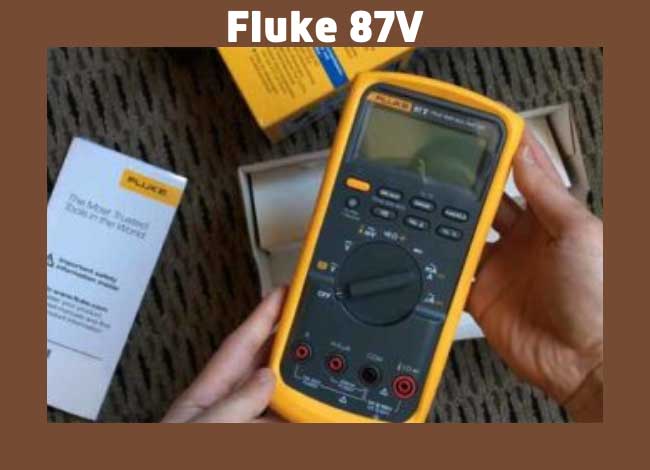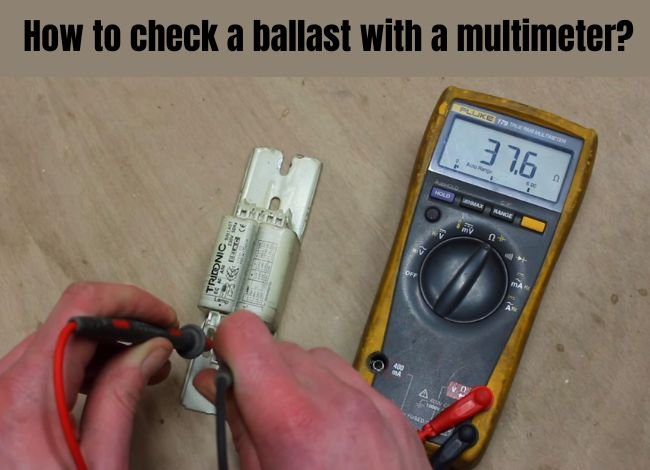Last Updated on October 24, 2023
The most basic thing the multimeter does is measure the voltage and amperage. Klein multimeters are the solution for having fundamental channels, as this gadget does all the troubleshooting procedures. The basic thing is to place a meter on it. The Klein multimeter is used to screen those digital elements and the circuits in the opening to the distribution channel. There are no detailed suggestions on the internet on how to use a multimeter. In this article, we will briefly discuss measuring voltage, amperage, and continuity.
Short Details About Klein Multimeter
Klein is one of the biggest brands; it not only sells reliable products but also stands up with great authority to fulfill the demands of its customers. Since 1857, they have been operating in this channel. Klein Multimeters are equipped with auto-ranging features that are capable of measuring AC/DC voltage, ampere, and resistance. Klein multimeters can effectively calculate the temperature, frequency, extreme duty cycle, and test diodes. The multimeters can test product linings that are exclusively designed for grounding in these situations. The system’s organization has been fixed after years of field research. Klein multimeters are loaded with so many innovative and time-saving features.
How to test the amps with a Klein multimeter?
Klein multimeters are so much capable of detecting all the errors in a gadget. Here we will see the detailed process of testing the amps with a Klein multimeter,
Phase-1
You need to test the occurrence nameplate on the cover of the battery or breaker. It is better to determine its maximum amperage. After you have attached the multimeter to the circuit, ensuring that the original meter is rated for the amperage is crucial. There is a designation for the core circuit. One of the most powerful sources is that it will misinterpret the approximate maximum amperage. You need to find the socket to find the multimeter’s maximum amps. It is simple to handle the highest temperature at the back of the device. You need to go through the instruction manual for proper functioning. It is simple to check in between the highest of the dial meters. This is the type for testing rigorous current at the highest dial settings.
Phase-2
In this stage, the maximum amps could possibly be defaulting through the “COM” socket on the multimeter. The wiring’s maximum current flow could fall short as it moves around the black and red probes. Push the multimeter’s red and black probes into the outer socket. If you are using a clamp attachment and also the probes, that could possibly extend to the meter supply path. At the end of the probe, you need to jackhammer a prong of the plugins that have been relying on the meter. The black probe always shows a negative wire. The plugs must cope with the COM socket.
Phase-3
If you hold them in one place, it may look like countering the actual current flow. Dialing the clamps could have a gigantic measure on the probes. These types of probes will connect to the meter just like the amperage settings fall short of it.
You need to Select the AC or DC current settings on the meter. The power source fails again if the information is not sufficient. The listing goes along with the voltage and asset measurement. The alternating current Typically runs domestic appliances. There are Severe electric motors, whether DC or AC, are used in battery-powered motors. These devices could be attached to residential settings. AC currents are thus converted to electricity DC with the help of the transformer.
Phase-4
Turn off the power that is attached to the main circuit. The power of the battery is incorporated into the main circuit. After that, unplug the negative lead that has been injected into the battery. It is so crucial to turn off the power breaker. After that, deactivate the switch. In the meantime, disconnect the negative and positive leads. Attach the meter that has the power circuit activated.
Disconnect the red wire and follow up on the power supply. Test the current that is flowing through a solid circuit. You need to deactivate the power to the circuit. The metal surface of the system needs to be attached to the positive wire. The red wires have a power source connected to them.
Phase-5
Wrapping the small pieces of wire around the multimeter prongs has a correlation with the exposed wire. Breaking the circuit is the most crucial thing here. The wiring clippers need to break the circuit anyway. There is a cooling cap that has the maximum amperage coming from the power source. All the wiring must be going through the device. The clippings connect the wires after the disconnection of this neutralization.
The next step is to unplug the black wire. The black wire is representative of the negative wiring, and the direct current circuit has an alternating current flow. The alligator prongs have been gathering through the clamp in a secured environment. All the wiring is insulated all the way to the concluding side. The clamp meter is on the right side of the wire clips. You must go through more than 2.5 cm at the end of the wiring. Then cut into the rubber octroi chamber insulation and attach it sharply to the clippers. Remove the insulation hose, and the momentum shifts towards wire snipping.
Phase-6
There is an unintentional cut in the beginning phase, which has a proper ending. You need to eastern up the proper stripping of the backend of the wirings. This has been countering away from all the power technology. Wires have come from the appropriate device channel of the testing cooperatives.
In the meantime, give the positive wire around the positive probe. Take off the red wire, separating that from the ultimate power source. It is either wrapping around the prongs on the multimeter probe. The alligator clips depend on the type of probe that has been surrounding it. You need to ensure that the wire’s attachment must get an accurate reading.
The positive wire probe’s technical Connection must suit the device’s power source. This is the prime reason it needs to be attached to the wires the other way. The clamp meter needs to complete the circuit in a magnetic way.
Phase-7
It is prudent to disassemble the probes in place for about some time. It tells you the proper scenario of the clampings. When the meter is in place, you can adjust the interim circulation of the adjunct disassembling. If the initialization process is up to the mark, you will be able to configure a good number on the digital display. The measurement of the big bulking should be counter-effective as these distributions are going pretty well concerning the authentic junction.
The interior prospect generates the proper reading of the meter. The current and the amperage have these initial accurate reading enclosures. This leaves the probes with the circuit descending within a few seconds for the most precise measurement available.
Phase-8
The final display reading will make the amperage, current testing, and recoil the abuse of the program. This usually detects how much electricity is actually flowing through the current studio. Attaching the positive wire might be advantageous to a short negative wire. If somehow this accidentally touches the ground, it will harm the circuit clamp. Thus the ultimate reading has become a negative sign for putting generous leads in a backward position. This can reverse the leads in no time as the Klein multimeter covers all the puzzles into the turning on of the circuit. In case this gets less than the sensitive settings, all these confusions can run better in a few adjustments regarding the 0.3 A coverage. This makes a sensitive setting of the measures setting more than 300 mA. It would be best if you moved this large red probe. If this does not work, then repeat the test within a while.
Phase-9
Finally, assault the positive wirings also the electrical component and attach those with the black multimeter probe. There is a battery-powered circuit that associates the wirings as well as power restoration. You need to turn off the power as the breaker or switch has a swirling turn it back on. The wire must be cut off in between all the power supplies. This is to certify that turning on any fans or lights in the vehicle can upset the readings. It can even overload the meter, and as a result, it doesn’t start.
Measuring Voltage with Klein Multimeter
How to calculate voltage with a Klein multimeter?
- At the very beginning, we need to detect the proper justification of the AA battery. After that, set the black probe into the COM port. Set the red probe into micro amp voltage settings. Set this with the DC range. Set all these portable electronic devices by using direct measurement values.
- The alternating current may have a relation with the black probe next to the ground. The red probe saves a lot of power by doing this. Press the probes as the AA battery’s adverse terminals move along with the flow. If there is an intake battery, then 1.5 V has a decent voltage on the screen. This voltage needs to have a greater value of more than 1.5 V.
- The sheer combination of the DC voltage and AC voltage needs to sort out a crazy loophole. There is a straight-lining that indicates DC voltage. The wavy line implies more consistency with an AC voltage.
- The voltage implementation seems decent with all of these combinations. The setting, along with a curly line, must be engaging with the AC voltage. The straight linings could be as fast as denoting DC voltage.
- Testify the red probe and manage the link to the port. The proper Connection with the red probe stunts with a silver lining of the component. This current originates within the COM probes with the opposite of the component. Detect the value on the screen.
- The Pointer is there for measuring voltage and attaching this to the multimeter, which has a parallel link with the component. All you need to testify is the voltage. The parallel multimeter has to be put in each probe along the leads. These components have the intention of measuring the voltage.
- You must choose the set of arrays that selects the knob dial. The 1.5 V has a bone to pick within 2V in the multimeter. There has been an auto range that is about to eject the measurement.
- You can start this by turning and connecting the probes with the particular integral ports after the setting has made the selection knob at the highest peak within the DC area. The instance of these 500 volts supply accelerates the flow of the current.
- A minimum voltage series is so important for measuring it with the absolute gross figure. This is always an excellent idea to reach the highest possible value. Make it an afterward function that may lay down until the analysis gets accurate.
How to navigate the fuse box consummation with a Klein multimeter?
One of the most common mistakes with a new multimeter is misinterpreting the fuse box instinct. The proper measurement of the current needs to legalize the probing from VCC output. The power to ground through the multimeter always agitates the breadboard power supply. The current rushes inside the multimeter display, and the downside fuse can be heated up. The amount of stress could reach as much as 200mA. There is an instant kind of audible physical vestige that denotes something is wrong inside the fuse box.
The collection of the VCC line has a close link with the breadboard, and the microcontroller cannot measure the current with a bad fuse. The observing allegation could cover the meter reviews, and the system does not fix the multimeter due to the interior fuse connection. All the functions could be damaged with the cable fuse. There is a convenient dandy mini screw that covers the screws manipulation.
The components can be so impactful that the PCB traces the multimeter within the developed amounts of current. This is so harmful as well as it can destroy the multimeter loadings. Then press the settings that are fruitful with the 200mA port. That is How you can navigate the fuse consummation with the Klein multimeter with proper ease.
Final Verdicts
If you are working on any of the electrical projects, it is necessary to check the amperage and voltage. This is how much electricity converges to the flowing of the circuit. While this is not a direct test, you need to measure amps to denote the pulling factory with more energy. For example, the calculation of the amperage with the Klein multimeter can be so enticing that it can determine any of the components in the vehicle. The acute draining of the battery closely appreciates the amps as it is easy to have a multimeter. Thus you can easily measure the amp and voltage of the electrical components with the help of a Klein multimeter.




